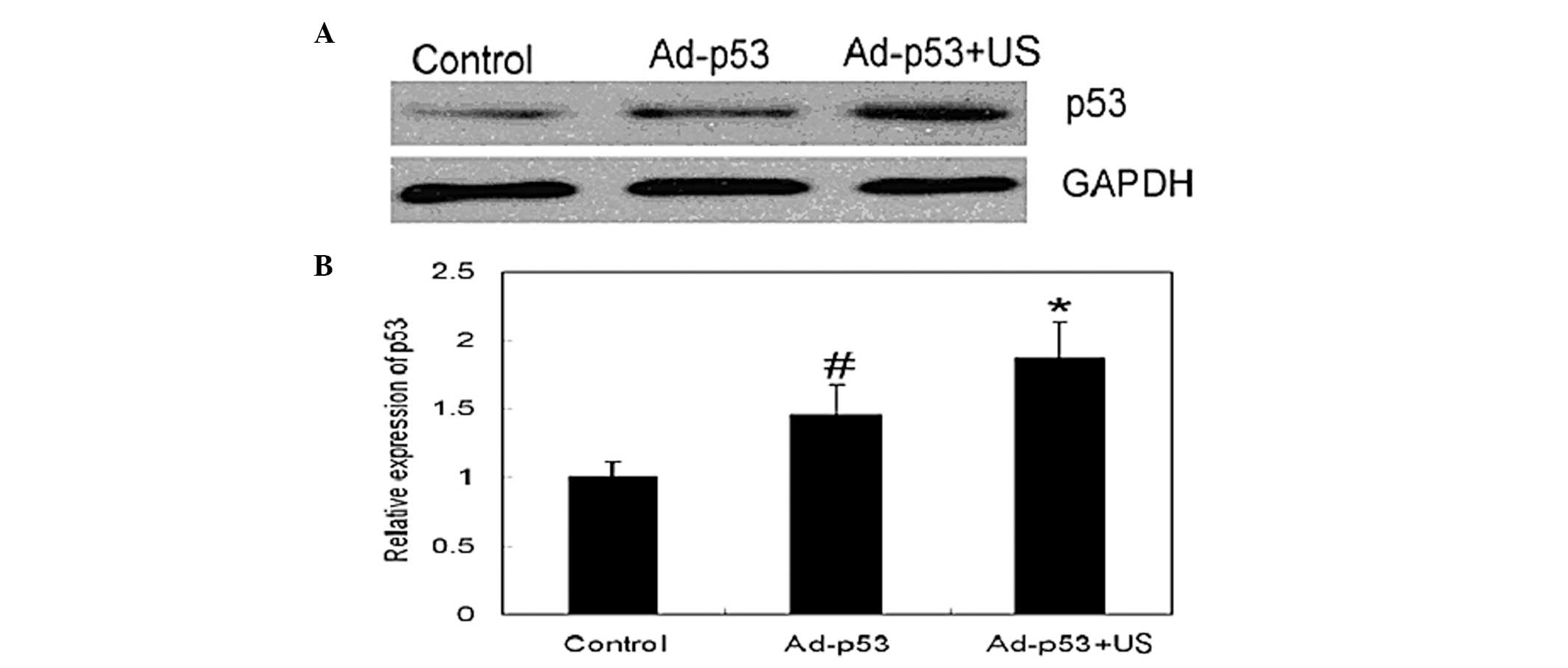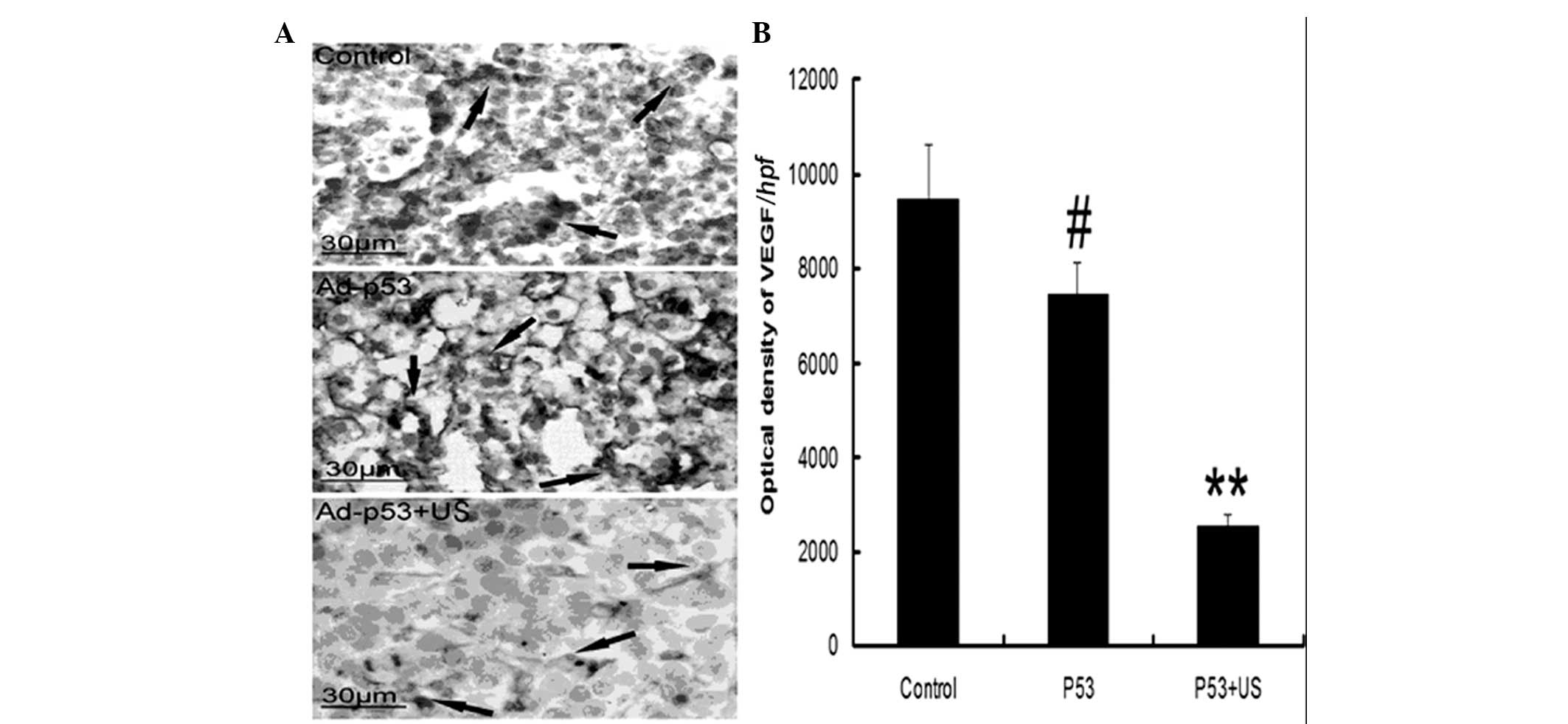|
1
|
Jemal A, Center MM, DeSantis C and Ward
EM: Global patterns of cancer incidence and mortality rates and
trends. Cancer Epidemiol Biomarkers Prev. 19:1893–1907. 2010.
View Article : Google Scholar : PubMed/NCBI
|
|
2
|
El-Serag HB and Rudolph KL: Hepatocellular
carcinoma: epidemiology and molecular carcinogenesis.
Gastroenterology. 132:2557–2576. 2007. View Article : Google Scholar : PubMed/NCBI
|
|
3
|
Lencioni R: Chemoembolization for
hepatocellular carcinoma. Semin Oncol. 39:503–509. 2012. View Article : Google Scholar : PubMed/NCBI
|
|
4
|
Lencioni R and Crocetti L: Local-regional
treatment of hepatocellular carcinoma. Radiology. 262:43–58. 2012.
View Article : Google Scholar
|
|
5
|
Liapi E and Geschwind JF:
Chemoembolization for primary and metastatic liver cancer. Cancer
J. 16:156–162. 2010. View Article : Google Scholar : PubMed/NCBI
|
|
6
|
Sangro B and Prieto J: Gene therapy for
liver cancer: clinical experience and future prospects. Curr Opin
Mol Ther. 12:561–569. 2010.PubMed/NCBI
|
|
7
|
Ji X, Ma L, Huang Q, et al: Network effect
of Wt-mutant p53 interactions and implications on p53 gene therapy.
Curr Pharm Des. 20:1259–1267. 2014. View Article : Google Scholar
|
|
8
|
Nault JC and Zucman-Rossi J: Genetics of
hepatobiliary carcinogenesis. Semin Liver Dis. 31:173–187. 2011.
View Article : Google Scholar : PubMed/NCBI
|
|
9
|
Brito AF, Abrantes AM, Pinto-Costa C, et
al: Hepatocellular carcinoma and chemotherapy: the role of p53.
Chemotherapy. 58:381–386. 2012. View Article : Google Scholar : PubMed/NCBI
|
|
10
|
Gu T, Li CX, Feng Y, Wang Q, Li CH and Li
CF: Trans-arterial gene therapy for hepatocellular carcinoma in a
rabbit model. World J Gastroenterol. 13:2113–2117. 2007.PubMed/NCBI
|
|
11
|
Zhang XZ, Lin H, Yang XY, et al: Quality
control of clinical-grade recombinant adenovirus used in gene
therapy. Zhonghua Yi Xue Za Zhi. 84:849–852. 2004.(In Chinese).
PubMed/NCBI
|
|
12
|
Chen YC, Liang HD, Zhang QP, Blomley MJ
and Lu QL: Pluronic block copolymers: novel functions in
ultrasound-mediated gene transfer and against cell damage.
Ultrasound Med Biol. 32:131–137. 2006. View Article : Google Scholar
|
|
13
|
Yu H, Xu L and Chen S: A transfer
efficiency model for ultrasound mediated drug/gene transferring
into cells. Ultrason Sonochem. 21:113–120. 2014. View Article : Google Scholar
|
|
14
|
Lawrie A, Brisken AF, Francis SE,
Cumberland DC, Crossman DC and Newman CM: Microbubble-enhanced
ultrasound for vascular gene delivery. Gene Ther. 7:2023–2027.
2000. View Article : Google Scholar
|
|
15
|
He Y, Geng Q, Liu H and Han X: First
experience using 4-dimensional hysterosalpingo-contrast sonography
with SonoVue for assessing fallopian tube patency. J Ultrasound
Med. 32:1233–1243. 2013. View Article : Google Scholar : PubMed/NCBI
|
|
16
|
Porter TR, Iversen PL, Li S and Xie F:
Interaction of diagnostic ultrasound with synthetic
oligonucleotide-labeled perfluorocarbon-exposed sonicated dextrose
albumin microbubbles. J Ultrasound Med. 15:577–584. 1996.PubMed/NCBI
|
|
17
|
Skyba DM, Price RJ, Linka AZ, Skalak TC
and Kaul S: Direct in vivo visualization of intravascular
destruction of microbubbles by ultrasound and its local effects on
tissue. Circulation. 98:290–293. 1998. View Article : Google Scholar : PubMed/NCBI
|
|
18
|
Shohet RV, Chen SY, Zhou Y, et al:
Echocardiographic destruction of albumin microbubbles directs gene
delivery to the myocardium. Circulation. 101:2554–2556. 2000.
View Article : Google Scholar : PubMed/NCBI
|
|
19
|
Yoke-Kqueen C, Ab Mutalib NS, Sidik SM,
Learn-Han L and Geok-Chin T: p53 codon 72 polmorphisms and random
amplified polymorphic DNA analysis of non-melanoma skin cancer
through archival formalin-fixed paraffin-embedded tissue. Oncol
Rep. 27:753–763. 2012.
|
|
20
|
Clarke JM and Hurwitz HI: Understanding
and targeting resistance to anti-angiogenic therapies. J
Gastrointest Oncol. 4:253–263. 2013.PubMed/NCBI
|
|
21
|
Sia D, Alsinet C, Newell P and Villanueva
A: VEGF signaling in cancer treatment. Curr Pharm Des.
20:2834–2842. 2014. View Article : Google Scholar
|
|
22
|
Hadler-Olsen E, Winberg JO and
Uhlin-Hansen L: Matrix metalloproteinases in cancer: their value as
diagnostic and prognostic markers and therapeutic targets. Tumour
Biol. 34:2041–2051. 2013. View Article : Google Scholar : PubMed/NCBI
|
|
23
|
Pytliak M, Vargová V and Mechírová V:
Matrix metalloproteinases and their role in oncogenesis: a review.
Onkologie. 35:49–53. 2012. View Article : Google Scholar : PubMed/NCBI
|
|
24
|
Sun H, Xu L, Fan T, et al: Targeted
hyperthermia after selective embolization with ferromagnetic
nanoparticles in a VX2 rabbit liver tumor model. Int J
Nanomedicine. 8:3795–3804. 2013. View Article : Google Scholar : PubMed/NCBI
|
|
25
|
Lee EW, Wong D, Tafti BA, et al:
Irreversible electroporation in eradication of rabbit VX2 liver
tumor. J Vasc Interv Radiol. 23:833–840. 2012. View Article : Google Scholar : PubMed/NCBI
|













